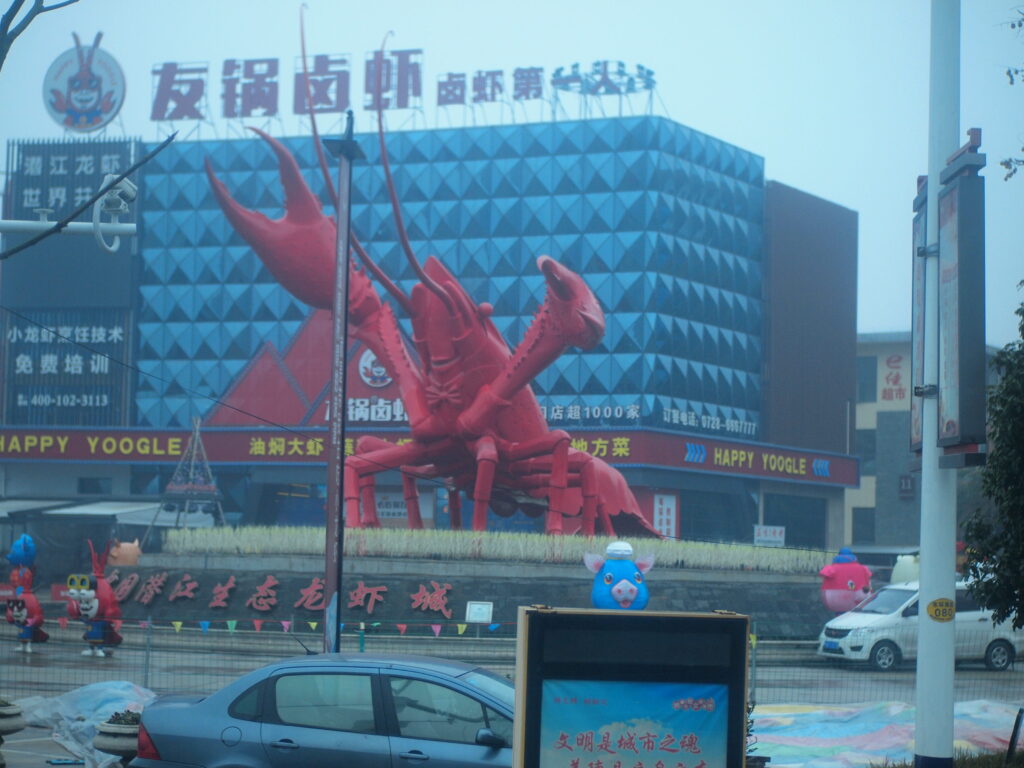Max Brenneman
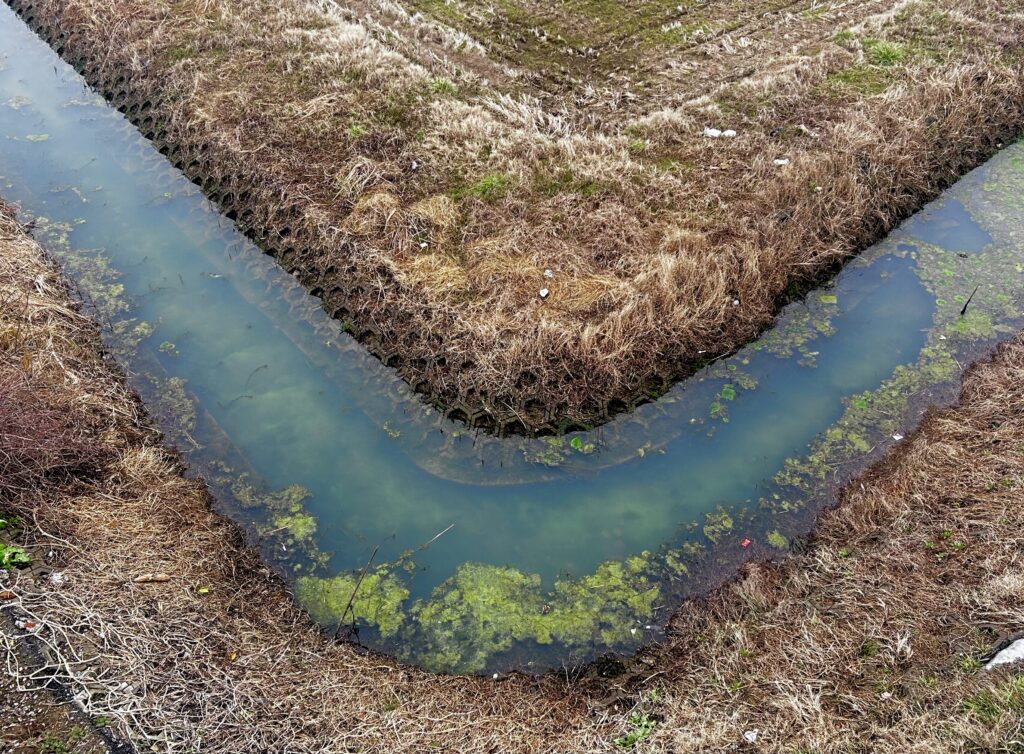
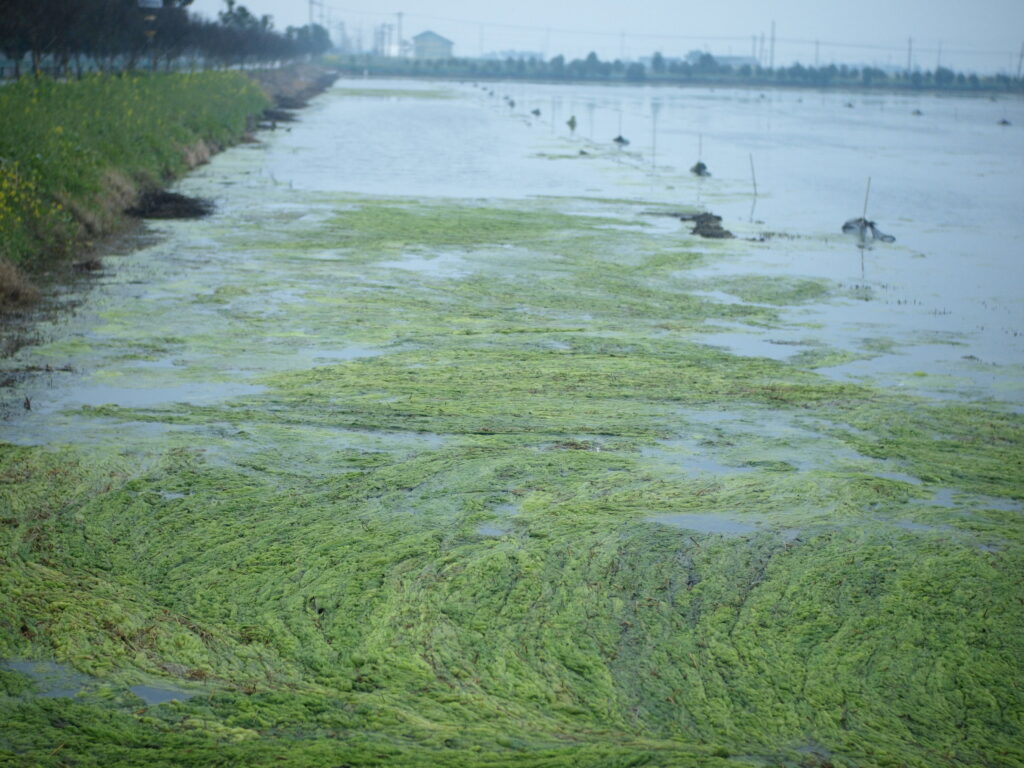
On our second day in Qianjiang, we saw several different sides of the crawfish industry. Ranging from a small-holder family farm to the massive Qianjiang Crawfish Exchange, we began to see how this region’s modernizing economic and cultural identities are being built upon crawfish as a commodity.
By cultivating crawfish and rice at the same time, farmers are able to have multiple seasons for their crops, enabling more financial security throughout the year.
On a cooperative community farm, we learned about different ways that land rights can be allocated among individuals, communities, and institutions. Interestingly, on the co-op model farm, use rights are granted to individual farmers, management rights are granted to the co-op company, and ownership rights—of course— are granted to the government. Out of the many different farming models we researched and visited, we agreed that the co-op model seemed to work the best, in terms of productivity and well-being of the farming individuals and their community. Perhaps this is because labor is well-divided among parties. Farmers are able to worry about the tangible realities of the land they use and the crops they produce, while the company takes care of land management, regulation, and upholding of industry standards.
In visiting all of these different farms during their off season, we were able to get a glimpse into daily life for farmers when they are not directly planting, maintaining, or harvesting their crops. Though it would have been great to see these aspects of agriculture too, visiting in the off season made clear how people in these agrarian communities spend their time.
After the co-op, we went to a large crawfish processing plant. We learned about how the Hubei Province’s crawfish industry was affected by Trump’s tariff war. Ten years ago, much of the processing plant’s products were exported internationally, but now almost none of their product leaves China. If it does, it is consumed mostly by Chinese diaspora communities in Southeast Asia.
Chitin, the chemical material that composes a crawfish’s shell, has a multitude of uses for humans. This byproduct of the crawfish industry can be used in cosmetics, fertilizers, and traditional Chinese medicines. The processing plant specialized in turning crawfish shells into raw chitin for these purposes.
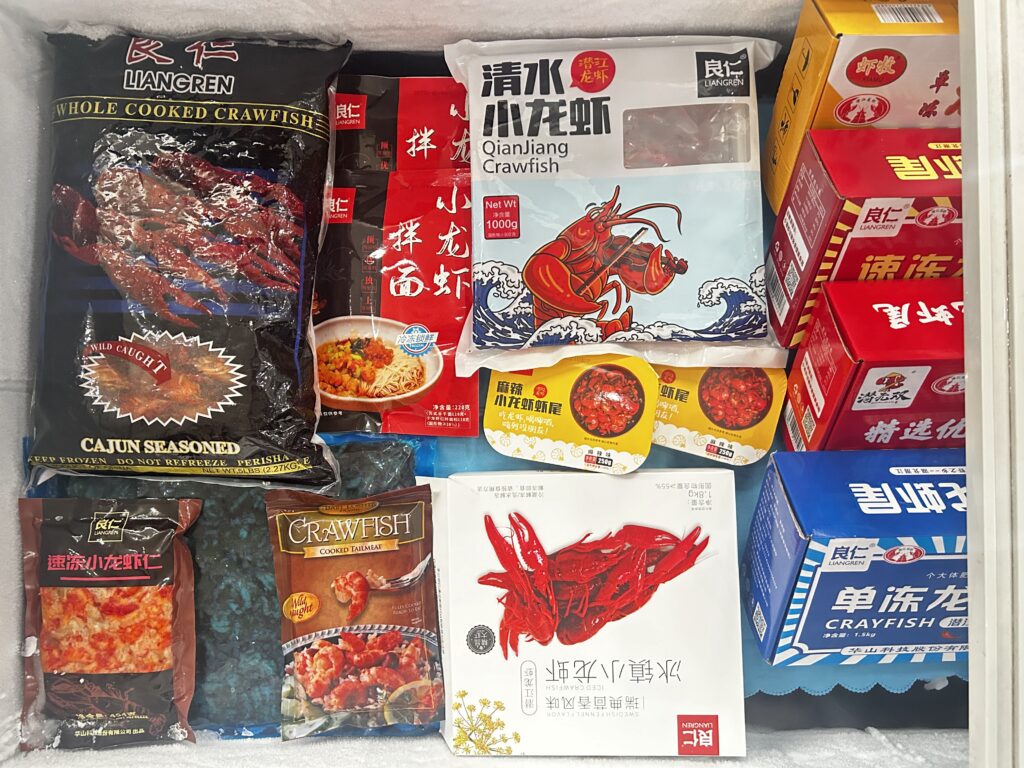
After visiting the processing plant, we had lunch at a local restaurant tucked in an alley behind the town’s main street.
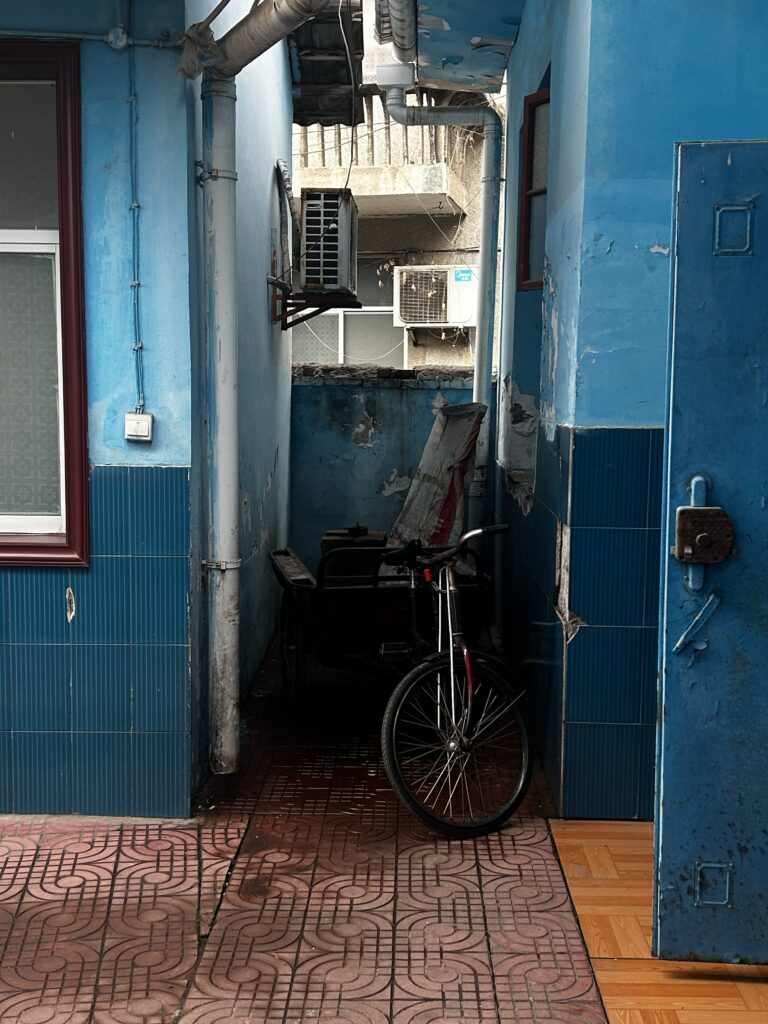
There we were treated to some great food including fish soup, chicken legs, and Chinese Celery.
After lunch, we headed to the massive Qianjiang Crawfish Exchange, a centralized packing and distribution center for the Hubei Crawfish industry.
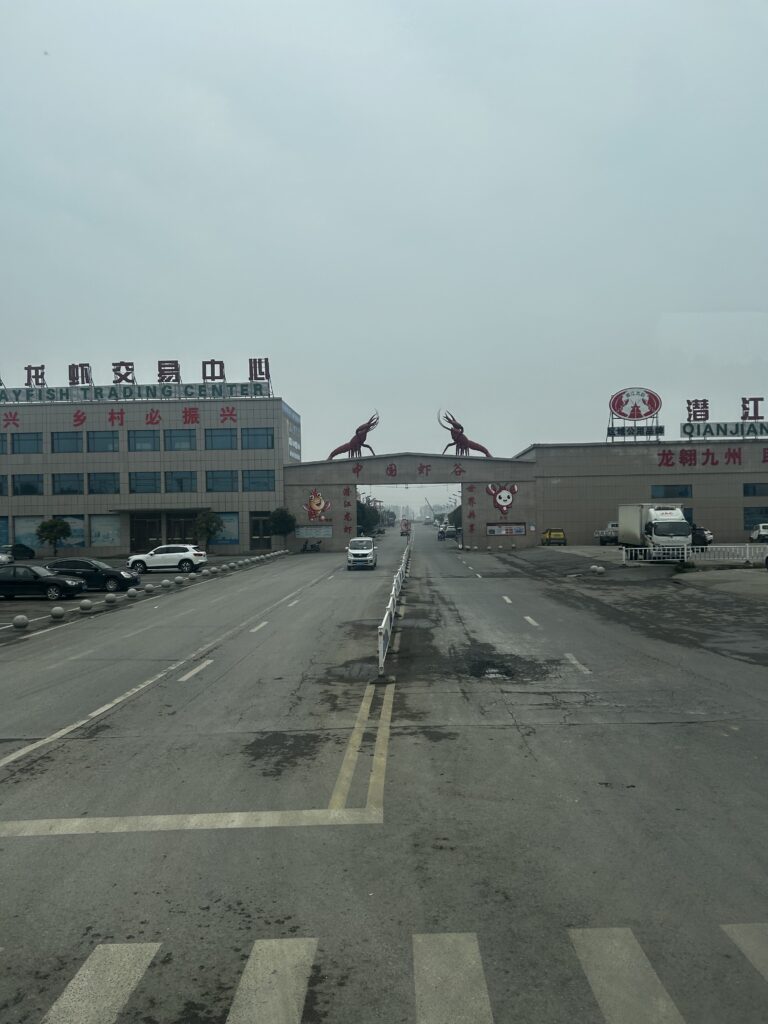
The absolutely massive scale of the Crawfish Exchange was shocking, and it gave us a fresh perspective on just how much the local economy had been built around the crawfish/rice cultivation model. A promotional video made it clear that Qianjiang’s long-term goal was to become the Crawfish Capital of China and beyond. Personifications of crawfish themselves in packaging, decoration, and architecture mirrored ways that the Lobster industry in Maine or the Peanut industry in Georgia are bolstered by nostalgic, often kitschy aesthetics of ritual consumption.

Finally, we visited a family farm. Though this farmer engaged in the crawfish aquaculture, he said that he had to grow fruits and vegetables year round to make ends meet. I think the visit to the family farm was surprising to many of us because it disrupted the romanticized imaginaries of the smallholder farm. Though it was a family endeavor, we saw mostly old people in the village, a representation of China’s demographic particularities with rural-urban migration.
We saw how the family farm struggled in ways that other models did not. Specifically, with the ice storm that had impacted Hubei several weeks prior, many of the farmer’s greenhouses had been irreparably damaged. He said that it would take two good seasons to make up for these losses.
Despite this hardship, our interactions with the family were positive. They kindly invited us into their wonderful home. And we chatted informally for a while about daily life in the village.
